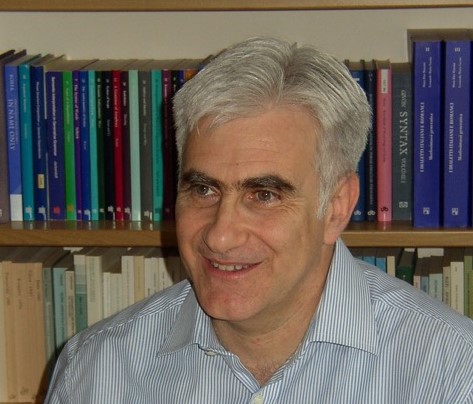At the boundaries of syntactic prehistory
Posted on 22 June 2021

Prof. Giuseppe Longobardi (Dept. Language and Linguistic Science), in collaboration with a team of researchers including Prof. Cristina Guardiano (University of Modena and University of Reggio Emilia, Italy), Dr. Luca Bortolussi and Prof. Andrea Sgarro (University of Trieste, Italy), and two former members of Professor Longobardi’s ERC grant group at York, Dr Monica Irimia and Dr Andrea Ceolin (University of Reggio Emilia, Italy), has recently published a new article ‘At the boundaries of syntactic prehistory’ in the high-profile biological journal Philosophical Transactions of the Royal Society B.
The paper focuses on the reconstruction of prehistoric language families from the syntax of their modern descendants and it is part of the theme issue ‘Reconstructing prehistoric languages’. It follows on two previous publications by Prof. Longobardi’s team ‘More Rule than Exception: Parallel Evidence of Ancient Migrations in Grammars and Genomes of Finno-Ugric Speakers’ and ‘Formal Syntax and Deep History’.
At the boundaries of syntactic prehistory
Linguists aim to determine how languages are related, group them into families and trace their changes over time. Traditionally, they have relied on the comparison of similar words with similar meanings to suggest an ancestral relation between two languages, e.g. English friend and German Freund. However, this rough method returns some false negatives (e.g. dog and German Hund, which is instead related to the more specific word hound), but especially a number of dangerous false positives: much or day are NOT related to Spanish mucho and dia and so on in many cases. What counts to prove relatedness among languages is rather systematic correspondence between individual sounds in languages, rather irrespectively of their physical substance. Thus, all true etymological relations between, say, English words beginning in f- and Romance words display a p- in Romance, so that for example full is an exact cognate of Italian pieno, even though no sound is identical between these two words; firth is related to Italian porto ‘port, haven’ and so on. This method works very well with languages closely related, but does not allow us to explore the deepest (pre)history of languages, because over many millennia systematic sound correspondences tend to completely disappear. Then, how can language relatedness be established without cognate words? This question has remained unresolved since the nineteenth century.
This study addresses the problem by comparing syntactic rules (coded as binary parameters, i.e. yes/no choices), instead of words, and devises statistical tools to assess the probability against chance of syntactic distances across languages from very different families. First, both the syntactic similarities of well-known families like Indo-European and Finno-Ugric (e.g. Hungarian, Finnish, Estonian…) test positive against chance, i.e. these families are recognised by the statistical method engineered. Then, the research moves on to test debated ancient groupings: it shows that the historically more controversial ‘Altaic’ group (Mongolian, Turkic and Tungusic languages) tests positive as well, even more neatly than Uralic. Then, the hypothesis of a Uralo-Altaic unity is probed: even this very controversial clustering tests positive, as well as the tentative relation between Japanese and Korean and a more mysterious one between some Caucasian languages and the Dravidian family of Southern India. Instead, some other groupings, sometimes controversially proposed in the literature, test negative (e.g. between Basque and any other family considered: Indo-European, Caucasian, Chinese) because the syntactic distances between such languages are non-distinguishable from randomly sampled ones.
These results suggest that syntactic diversity, modelled through a generative biolinguistic framework, can be used to provide a proof of historical relationship between distinct families, irrespectively of the presence of a common lexicon with regular sound correspondences; therefore, one can argue that modern syntax may expand the time limits imposed by the classical comparative method.
“This article is the most recent output of a long and ongoing enterprise trying to show that cognitive science, which has lead us to develop formal models of syntax, can take its place alongside genetic anthropology or modern archaeology in the process of turning theoretical discoveries into tools for investigating ever deeper levels of human history” - Prof. Giuseppe Longobardi, Dept. Language and Linguistic Science.
To read the full article online: At the boundaries of syntactic prehistory
